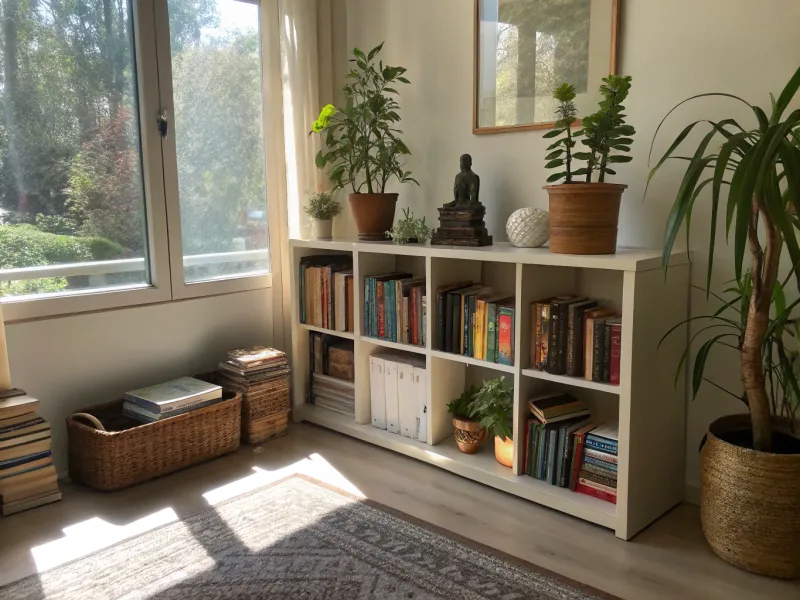35 Powerful (and Surprisingly Easy) Ways to Let Go of Grudges
Grudges are heavy. And here’s the thing—they don’t protect you, they just drain you. You think holding onto that anger keeps you strong, safe, in control… but all it really does is keep you stuck.
Letting go doesn’t mean what they did was okay. It means you choose peace over poison. And the best part? It’s way easier (and more freeing) than you think.
Here are 35 surprisingly simple ways to drop the baggage—and get your peace back.
1. Say it: “I’m tired of carrying this.”

Admitting it is step one. You’re not weak for letting go—you’re smart. Recognizing and verbalizing that you’re weary of carrying the grudge is liberating. It marks the beginning of a journey to emotional freedom. In a quiet room or a peaceful outdoor setting, speak those words out loud.
There’s power in hearing your voice affirm that you’re ready to release the weight of resentment. It’s the first step to reclaiming your peace.
2. Write them a letter (you don’t have to send it)

Let it all out. No filter. Then burn it, rip it, release it. Writing provides a private space to pour out emotions without judgment. The act of creating a letter to the person who hurt you—but not sending it—allows for expressing thoughts and feelings that have been bottled up.
Once written, dispose of the letter in a way that symbolizes release, like burning or tearing it up. This ritual can be incredibly cathartic and empowering.
3. Decide: This won’t define me anymore

Your story gets to be about you, not what they did. Deciding that your identity is not tied to the grudge is a powerful declaration of independence. It means choosing to move forward without allowing past hurt to dictate your life.
Picture yourself shedding an old skin, stepping into a new chapter where you control your narrative. This decision opens doors to new beginnings and self-empowerment.
4. Vent in a safe space

A journal. A friend. A therapist. Don’t let it fester—let it out. Finding a safe space to vent is vital for emotional release. Whether it’s writing in a journal or speaking to someone you trust, expressing feelings helps to prevent them from festering and causing more harm.
Safe spaces provide comfort and validation, making it easier to process emotions and gradually let go of grudges.
5. Feel the anger fully—then let it move through

You have to feel it to free it. Don’t skip this step. Allowing yourself to fully experience anger without suppression is crucial to letting it go. Sit with the feeling, acknowledge its presence, and then visualize it passing through you like a gentle breeze.
This practice of emotional acceptance and release helps in breaking the cycle of holding onto grudges, paving the way for healing.
6. Ask: What is this grudge costing me?

Your energy, your joy, your peace? Time to take it back. Consider what holding onto resentment is truly costing you. Reflect on how it affects your mental and emotional well-being.
By understanding the toll it takes, you can make a conscious choice to let go, reclaiming your energy and joy. This realization empowers you to prioritize your peace and happiness over the negativity of grudges.
7. Cut the mental reruns

You’re not required to replay that scene 100 more times. Constantly revisiting the past in your mind only keeps the wound fresh. Imagine switching channels on a TV—replace the negative mental reruns with positive or neutral thoughts.
By consciously redirecting your focus, you free yourself from the loop of resentment and make room for healing.
8. Remember: Closure isn’t always a conversation

Sometimes it’s a quiet decision you make for you. Closure doesn’t always come from a conversation or apology from another person. It can be a personal decision to accept what happened and move forward.
Sitting quietly by a peaceful body of water, visualize yourself closing the chapter internally. This self-contained closure allows you to take back control and find peace within yourself.
9. Create a “Let It Go” ritual

Burn the letter, write it in the sand, scream into a pillow. Symbolic action = real release. Creating a ritual around letting go can provide a physical form of release. The ritual can be as simple or elaborate as you like, from writing in the sand to burning a letter.
This symbolic act allows you to physically and emotionally release the grudge, making it easier to move forward with a lighter heart.
10. Stop waiting for an apology

You may never get one. Don’t let their silence hold you hostage. Waiting for an apology puts control of your peace in someone else’s hands. Decide to move forward without it.
Picture yourself standing firm and letting go of the expectation. This act of self-liberation frees you from waiting for something that may never come, allowing you to regain your own peace of mind.
11. Say out loud: “They don’t control me anymore.”

Claim it. Reclaim it. Speaking these words is a form of empowerment. By verbalizing that someone no longer has control over you, you reinforce your decision to release their hold over your emotions.
Imagine standing in an open field, feeling the wind on your face, declaring your freedom. This affirmation is a powerful reminder that you hold the reins to your emotional well-being.
12. Recognize when your ego is keeping the grudge alive

Sometimes we’re more hurt by being hurt than what actually happened. Acknowledging the role of ego in maintaining a grudge can be enlightening. Reflect on how pride and wounded ego may be fueling your resentment.
By recognizing this, you can begin to detach personal feelings from the situation, easing the way towards forgiveness. This self-awareness is a step towards liberation.
13. Take your power back—by choosing peace

Forgiveness is freedom, not permission. Choosing peace over retaliation or harboring resentment empowers you to reclaim your power. Imagine meditating in a tranquil garden, feeling a wave of calm wash over you.
By choosing peace, you decide to prioritize your well-being over the negative energy of grudges, transforming your life with empowerment and serenity.
14. Imagine how you’ll feel once you’re free

Visualize your life without the weight. That’s your motivation. Envision the freedom and lightness that comes from letting go. Picture yourself in a sunny field, arms outstretched, feeling the breeze.
This visualization can serve as motivation to release the burden of resentments. By focusing on the positive changes, you cultivate a future filled with joy and peace.
15. Choose compassion—not for them, but for you

You deserve peace. Not them. You. Choosing to show compassion to yourself is an act of self-love. It means prioritizing your peace over anger and resentment.
Picture offering yourself a kind smile in a mirror, acknowledging the journey you’ve been through. By choosing compassion, you allow for healing and growth, nurturing your soul and creating space for peace.
16. Unfollow, mute, or block if needed

Your peace > their updates. In today’s digital world, social media can keep grudges alive. Don’t hesitate to unfollow, mute, or block individuals whose online presence disrupts your peace.
Imagine scrolling through your phone and making deliberate choices to cultivate a positive environment. This action helps to create boundaries and protect your mental well-being.
17. Practice saying: “I’m done with this story.”

Especially when the same thoughts try to drag you back in. Repeating this phrase can help reinforce your decision to move past the grudge. Imagine closing a book with finality, signifying the end of that chapter.
By practicing this declaration, you affirm your choice to leave behind the old narrative, allowing yourself to write a new one filled with hope and healing.
18. Give yourself permission to move on

You’re not abandoning your past—you’re choosing your future. Granting yourself permission to move forward is a powerful act of self-care. Picture standing at a crossroads, choosing the path that leads to growth and peace.
This decision is not about erasing the past but embracing the potential of the future. It’s an acknowledgement that you deserve happiness and are free to pursue it.
19. Rewrite the story in your mind

They didn’t break you. You got wiser. Stronger. Clearer. Rewriting the narrative of past events allows you to see them through a lens of growth rather than pain.
Picture yourself journaling, turning moments of hurt into lessons of strength. By reshaping the story, you transform resentment into resilience, empowering yourself to embrace life with renewed clarity and purpose.
20. Use the pain as fuel for your growth

Turn resentment into boundaries. Anger into clarity. Channeling the energy of pain into personal development can be transformative. Imagine climbing a mountain, each step representing growth.
By using past hurt as motivation to set healthy boundaries and gain clarity, you empower yourself to achieve personal and emotional heights. This process turns adversity into an opportunity for profound growth.
21. Accept that people can’t give what they never had

Some people just don’t know how to love well—and it’s not your job to fix them. Understanding that not everyone is capable of meeting your expectations can be freeing.
Imagine looking out a window, contemplating the complexities of human relationships. By accepting these limitations, you release the burden of trying to change others, shifting focus to your own healing and well-being.
22. Don’t confuse forgiveness with access

You can let go and keep them out of your life. Forgiveness doesn’t mean allowing someone back into your life. Picture gently closing a door, symbolizing closure without re-entry.
By setting boundaries, you protect your peace while releasing the grudge. This distinction empowers you to forgive without compromising your emotional safety, allowing for healing without reopening past wounds.
23. Ask yourself: What would freedom look like right now?

It starts with a thought. A choice. A shift. Ponder what freedom from grudges would look like in your life. Picture yourself standing on a hilltop, gazing at the horizon, envisioning possibilities.
By imagining a future unburdened by resentment, you identify steps to take towards that freedom. This exercise helps to clarify your desires and align actions with the goal of emotional liberation.
24. Repeat: “I forgive them to free me”

Because that’s exactly what you’re doing. Repeating this mantra can reinforce your decision to forgive for your own peace. Imagine meditating in solitude, focusing on these words.
By internalizing this affirmation, you remind yourself that forgiveness is a gift you give to your own heart, allowing you to release the chains of resentment and embrace freedom.
25. Laugh (even if you have to fake it at first)

Humor helps loosen the grip. Laughter, even when forced, can lighten the emotional load of grudges. Picture being surrounded by friends, sharing stories that spark joy.
By incorporating humor into your daily life, you create moments of relief and connection, making it easier to let go of negativity. This simple act can shift perspectives and encourage a more positive outlook.
26. Shift focus: What do I want to feel instead?

Peace? Lightness? Relief? Start feeding that. Reflect on the emotions you’d like to cultivate instead of resentment. Picture sitting in a quiet park, contemplating feelings of peace and relief.
By identifying positive emotions, you shift focus from what you don’t want to what you do. This change in perspective aids in letting go, creating space for joy and contentment in your life.
27. Declutter your space while you declutter your heart

Letting go physically often helps emotionally, too. Clearing out physical clutter can mirror the process of releasing emotional baggage. Imagine an organized room filled with light and air, symbolizing mental clarity.
By tidying your environment, you support the emotional process of letting go, creating a space that reflects inner peace and openness.
28. Remember how strong you are for surviving it

What happened hurt, but you’re still standing. That matters. Reflect on your resilience and the strength it took to endure difficult times. Picture standing proudly, looking back at a path filled with challenges.
This acknowledgment of your survival reinforces your inner strength and empowers you to continue moving forward with courage and confidence.
29. Surround yourself with people who help you heal

Not those who keep you angry. The company you keep influences your emotional state, so choose friends who uplift and support your healing journey. Imagine being surrounded by a diverse group of friends who provide encouragement and love in a warm setting.
This supportive network fosters positivity and growth, aiding in the process of releasing grudges and embracing peace.
30. Take one small action that says: “I choose me.”

A walk. A nap. A boundary. Anything that honors you. Making small choices that prioritize your well-being can have a profound impact. Picture taking a serene walk in nature, each step a testament to choosing yourself.
Whether it’s setting a boundary or taking time for self-care, these actions reinforce your commitment to your peace and happiness.
31. Don’t wait until you “feel ready”

Start releasing even if you’re still mad. Healing isn’t linear. Waiting for the perfect moment to let go can keep you stuck. Imagine taking a first step on an unexplored path, embracing the uncertainty.
By choosing to release resentments even when it feels difficult, you acknowledge that healing is a process, and every step forward counts towards finding peace.
32. Create space for something better

You can’t receive peace while holding resentment with clenched fists. Releasing grudges creates room for positive experiences. Picture planting a seed in a garden, symbolizing new beginnings and possibilities.
By letting go of negativity, you foster an environment where growth and peace can flourish. This action reflects your readiness to welcome better into your life.
33. Understand: Forgiveness isn’t forgetting—it’s remembering without the rage

That’s real power. Forgiveness is not about erasing memories but transforming them. Picture reflecting in a serene park, recalling past events without anger.
By redefining forgiveness, you empower yourself to view memories through a lens of peace, allowing them to exist without the emotional charge. This shift in perspective is liberating and strengthens your emotional resilience.
34. Give yourself the grace to try again tomorrow

It’s okay if you let go… and pick it back up. Just keep trying. Practice self-compassion as you navigate the journey of letting go. Imagine watching a sunrise, symbolizing a fresh start each day.
By giving yourself grace, you acknowledge that letting go is not a linear process. Each day offers a new opportunity for progress, reinforcing hope and resilience on your path to peace.
35. Let go for the version of you who deserves peace

Because she’s been waiting. And she’s so ready. Letting go is an act of self-love for the person you are becoming. Picture yourself journaling in a sunlit room, imagining a future filled with peace and joy.
By releasing the burdens of the past, you honor the version of yourself that awaits—a self that is ready to experience life with a light heart and open mind.







